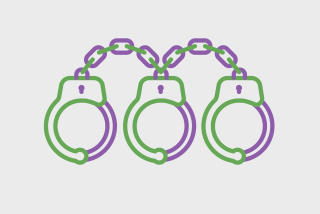Spending: Yes on 71, No on 72
- Share via
Proposition 71 on the June 7 ballot is a forthright plan to strengthen public schools, trauma centers and other health services, and transportation--all without raising state taxes. Proposition 72 is a counterfeit bill that would strip money from schools, hospitals and other state programs and use it for relatively meager improvements in transportation.
A slick radio campaign promotes Proposition 72 as a cure-all for traffic jams. But even if the California Transportation Department could raid other state budgets, its projects would be so far behind its own projections of need that only new taxes could do what its promoters claim for the plan. We urge a Yes vote on 71, because it would help California. We urge a No vote on 72, because it would hurt.
The very premise of Proposition 72 is silly. It suggests that sales taxes that are collected on the sales of gasoline and diesel fuel be used only on transportation projects. That makes no more sense than mandating that a sales tax on men’s suits be used only to raise sheep to provide wool for more suits.
There is the same cruelty involved in selling Proposition 72 as a solution to traffic jams as in any passing of counterfeit currency. In the first year, robbing other state programs to raise transportation money would increase the highway budget by about 5%. Increases of 50% and more would be required to even begin to clear away some of the rush-hour congestion on California roads.
Proposition 72 also would do nothing to make the limit on state spending more compatible with real life than the limit imposed in 1979. The current limit is based on the national consumer price index, and it prohibits a year-to-year increase in the state budget that is larger than the increase in the price index.
To begin with, the family-based consumer index is useless for measuring inflation in highway or prison programs. To compound that error, the spending limit was based on a national index, not on one that reflected inflation in California. In 1980-81, for example, the national consumer price index rose 14.7%; in California the index went up 18%. While the average American consumer experienced inflation of 2.3% in 1986-87, California consumers lived with a rate of 3.9%.
We have said before that a price index that has no bearing on government’s obligation to operate public schools and provide health care, especially emergency care, is the wrong way to determine limits on spending for those services. Proposition 71 would replace the limit based on a price index with a limit based on the annual increase in per-capita income. That would link the spending limit with California’s ability to pay. It would make more money available for schools, health care and other state and local programs, and at the same time would make it possible for spending to increase on highways and other parts of the transportation network.
Proposition 71 would make these changes without disturbing other state laws that discourage tax increases. It would accomplish its goals without robbing other programs to provide tiny increases in highway programs that would have no discernible effect on traffic jams. We recommend a Yes vote on Proposition 71, a No vote on Proposition 72.
More to Read
Get the L.A. Times Politics newsletter
Deeply reported insights into legislation, politics and policy from Sacramento, Washington and beyond. In your inbox twice per week.
You may occasionally receive promotional content from the Los Angeles Times.








